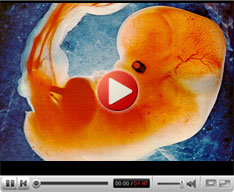
Know Infertitlity
Infertility treatments
Diagnosing InfertilityMale:
Obstetrics and Gynaecology
Infertility Treatment Services
Andrology |
Tubal RecanalizationFallopian tubes are fine tubular structures that connect the uterus to the ovary. A mature ovum travels along the fallopian tube towards the uterus and it is here that the sperm fuses with the egg to bring about fertilization. However an obstruction in these tubes prevents the fusion of the sperm with the egg thereby causing infertility. Tubal factor infertility is by far the most common causes of female infertility. Fallopian tube recanalization is a technique to remove this fallopian tube blockage by using special catheters. What Causes Tubal Blockage?Pelvic inflammatory disease (PID) is by far the most common cause of tubal factor infertility. This condition refers to the inflammation of the fallopian tubes, uterus and the ovaries. Main cause of PID includes sexually transmitted infections caused repeatedly by chlamydia or gonorrhea. Inappropriate treatment early on leads to the build up of scar tissue which in turn causes blockage of one or both the fallopian tubes and subsequent infertility. Other potential causes of tubal factor infertility include:
All of the above factors invariably lead to the build up of scar tissue, debris and mucus in the fallopian tubes, thereby causing blockage. Tubal Recanalization ProcedureIn this procedure, trained radiologists diagnose and treat obstructed fallopian tubes by performing a nonsurgical technique called selective salpingography. Here, a dye is injected through the vagina into the uterus by means of a catheter in order to obtain an X-ray image of the uterine cavity. Once the location of the blockage in the tube is identified, another catheter is inserted into the fallopian tube to remove the blockage and open the tube. Many patients who have successfully undergone tubal recanalization procedure conceive within the first 6 months. However, it is crucial that appropriate tests are done to the male partner to identify and correct any abnormalities present before this procedure is done to the woman. There are chances that fallopian tubes that have been recanalized may get blocked again, in which case the entire procedure has to be repeated. ComplicationsThe patient is likely to experience mild cramps and bleeding for a few days following the procedure. If symptoms like extreme pain, discomfort and bleeding persist for a long time, it is important to consult the doctor for appropriate treatment. |
Our TeamNews & EventsClinic LocationVideo Gallery |















